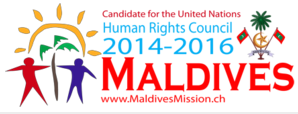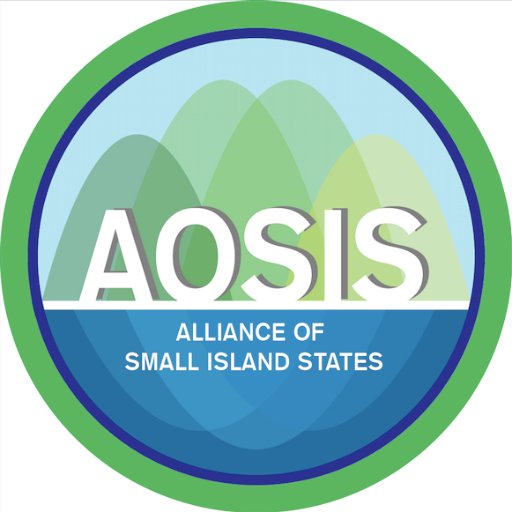Panel Discussion: World Tsunami Awareness Day 2016
Remarks by Ambassador Sareer, Permanent Representative of the Republic of Maldives to the United Nations
United Nations, New York, 3 November 2016
Moderator Questions:
Many small island developing States (SIDS) are particularly vulnerable to tsunamis. Not all countries have the capacity and resources to invest prevention measures, like early warning systems. How can small island developing States, implement cost-effective early warning systems and tsunami preparedness plans tailored to their national capacities and resources? Are there any successful examples you can share?
Good Afternoon Excellencies, Colleagues
Thank you Pamela for the questions – most pertinent. I would like to share a little bit of our experience in 2004, with how we recovered after.
On Sunday, 26 December 2004, Maldivians woke up to a normal Sunday. Schools were done for the year. The year was ending. It was the start of a work-week, so everyone was at work – including myself.
My office – the Ministry of Foreign Affairs – is on the marine drive of Male'. We have a first seat view of the beautiful ocean surrounding all the islands of the Maldives, and feel the breeze coming off it.
At 9:20am, everything changed.
Tidal waves ranging between one and five meters high were reported in all parts of the country. Some people thought it was the "end of the world". Others saw the water receding far back, exposing fish, the bottom of the lagoon...and then saw the same waves crashing back flooding entire islands, washing over and across islands in few minutes. Some people clung to coconut palms while they watched their houses, livelihoods wash away. For most of the day, the communications system was down, the authorities did not know the extent of damage until much later.
Before that Maldivians had never experienced, or even heard of a "tsunami". How would we know how to react? How to respond in a situation we didn't have any knowledge of? How do we recover? How does the Government respond when the extent of damage was unknown?
To understand this dilemma you have to understand the geography of Maldives. At that time, a population of less than 300,000 spread across a large expanse of oceans. 80 percent of islands in Maldives are less than one meter above sea level. 199 islands were identified as inhabited – meaning that it was one with government offices, classified as an administrative unit. Fishing and tourism are the main economic activities. Fishing especially is a way of life, the sea and oceans part of traditions, folklore and culture.
A total of 82 people lost their lives. 25 people were lost and are unaccounted for. These figures are small in numbers compared to losses felt elsewhere, but still lives!
But compared to the damage felt relative to size, the impact was massive. Sixty-nine islands of the 199 inhabited islands were damaged. Only 9 islands completely. A third of the population was directly affected. Over 15,000 people lost their homes. People from 13 islands were shifted to other islands. Over 29,000 people were internally displaced.
The damage to the economy accounted to 63% of GDP making it the worst natural disaster ever suffered by the people of Maldives.
25 fishing vessels were lost, 120 vessels destroyed. The fisheries sector sustained damages accounting to over 25 million US dollars. 21 tourist resorts were temporarily shut down: with many others impacted wholly or in part. The damage to the tourist sector was over 250 million US dollars. Agricultural lands were destroyed: some never recovered. Flooding wiped out electrical supplies on many islands. All communications were lost for ten hours or more. Water shortages were acute – 15% of islands - with the destruction of storage facilities. In 25% of islands, harbours and jetties were destroyed, making it difficult to reach islands, and evacuate victims and facilitate travel.
The ecological damage was immense: protective layers of soil were damaged, the underground water table were destroyed in many islands, which meant fresh water from the ground was unusable from then on.
So now to this question of preparedness: How can countries like Maldives - small island developing States - implement cost-effective early warning systems and tsunami preparedness plans tailored to their national capacities and resources?
For us, the tsunami was an eye-opening experience. Many lessons were learnt. And I will share some with you.
Communications systems as I mentioned were completely down for upto 10 hours or more. We went back to the old "walkie-talkie", satellite radio systems. We discovered that despite the advances in modern communications technology, for emergencies this sort emergency communications set-up was important.
Hours after the tsunami hit, the Government had scrambled together a national taskforce with the emergency services, medical personnel, volunteers. The "tsunami management centre" directed recovery efforts for the large part and subsequently was established as the "National Disaster Management Centre" – the first of its kind focusing solely on disaster management, reducing risks and raising awareness.
The reconstruction effort focused on "building back better". The Reconstruction and Rehabilitation Plan was completed during the first month following the disaster. Under the plan, more than two thousand new homes were newly constructed to replace the homes that were lost. Over 5,000 houses were repaired. It took ten years due to financial and other constraints, but today, no one is living in temporary shelters.
Preparedness and awareness is key. As a result of work carried out since 2005, disaster preparedness plans are being developed for all islands. As part of this work, the NDMC has published disaster risk profiles for all inhabited islands. Based on assessments carried out by NDMC a Risk Index has been established. These will now be updated based on the Sendai Framework.
In addition, the National Disaster Management Center has established a National Emergency Operations Plan detailing the protocols to be followed in the event of a disaster, and is continuously updating the National Disaster Management Plan. The Centre has led efforts to enact the "National Disaster Act" which institutionalises many of the lessons learnt during the tsunami on coordination, cooperation, recovery and reconstruction.
Working in collaboration with regional disaster management organisations, an early warning system has now been established at the National Meteorological Centre. This will ensure that information about impending disasters is immediately transmitted to all media outlets in the Maldives. Cooperation and collaboration with regional and international organisations are also key in this effort.
One point to highlight for consideration: Tsunami preparedness is mostly pitched as a national effort, and at most with regional collaboration and support. But the impact of tsunami on countries such as mine – Small Island Developing States – addresses a larger question.
When 2004 tsunami hit, we were 6 days away from graduation from the Least Developed Country status. You have heard how vulnerable our country was to this disaster and it is the case with every SIDS – Samoa in the Pacific was assessed for graduation and graduation delayed due to a tsunami. Same with Vanuatu. The larger question is that of the vulnerability of different country's economies to natural disasters and catastrophes, and how this vulnerability should feature in the development, and indeed the graduation discourse.
In conclusion, my hope is that international days like these provide he opportunity for us to learn from each other and better shape our response. We hope to hear from the others on this panel, and others.
Thank you.



